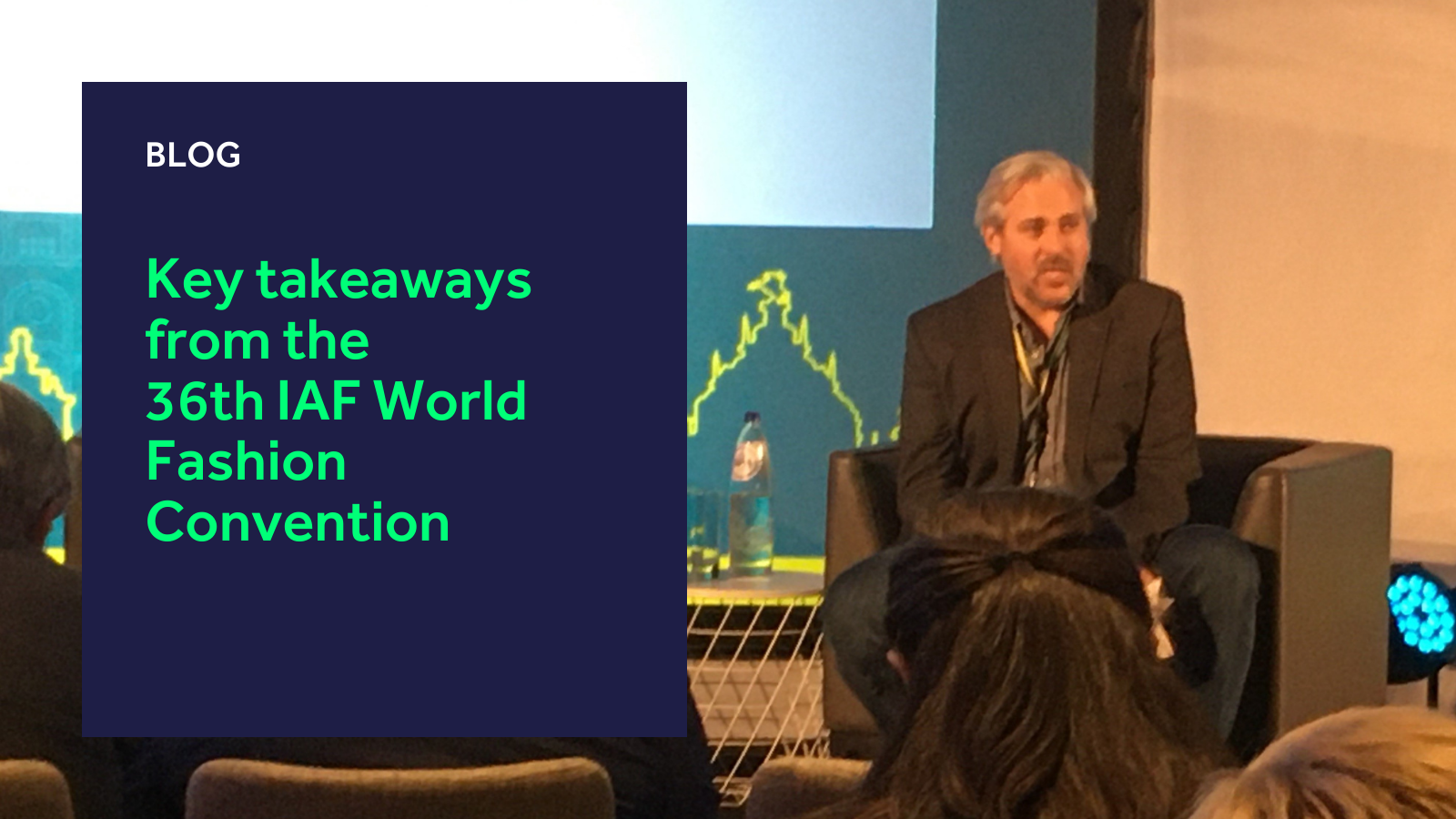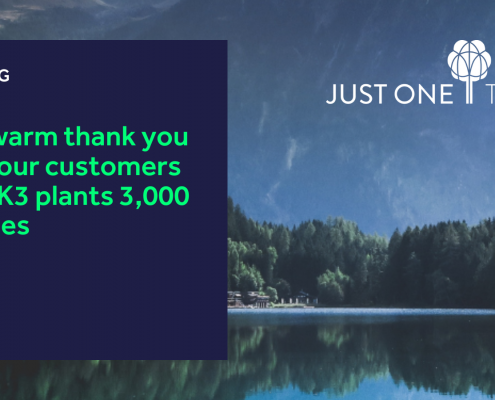Recently, K3’s Casey Potenzone and Rik Veltman had the pleasure of attending the 36th IAF World Fashion Convention.
The event’s theme was “Transition of the Global Fashion System” and businesses from across the world came together to discuss how the fashion industry can build towards a more transparent and circular supply chain.
Fashion and apparel have a serious waste problem
According to McKinsey, more than three in five consumers say environmental impact is an important factor in their purchasing decisions.
Yet, up to 85% of textiles go into landfill each year which equates to enough waste to fill the Sydney harbor annually.
Further, all industries that can be linked to fashion and apparel, alongside the sector itself, contribute to 10% of all carbon emissions worldwide.
Clearly, fashion and apparel need to adapt and fast.
To help foster more socially responsible practices, several solutions were suggested at IAF which we have detailed below:
Supply chain collaboration
The drive for change isn’t only initiated by brands, retailers or being close to the consumer – it is also established further down the supply chain.
During IAF, there were two garment producers who shared how they’d started collaborating with their customers to change and innovate both their relation and the way they sourced materials.
Normally, these changes are driven top down and even today, they are rarely the other way around. Through collaboration, these suppliers receive market input early to ensure the right materials could be available for their customers to choose from.
Digitalisation
Across the world, businesses are starting to utilise 3D design techniques and tools to enable brands to be more accurate with their designs.
3D tools help brands tweak their designs many times without the need for factories to manufacture each prototype iteration. The benefit of this is twofold as it enables designers to reduce their footprints while giving them additional flexibility.
However, while digitalising the design phase is undoubtedly a step in the right direction, it is not without its own set of problems, such as a lack of standardisation across 3D formats.
With that said, the benefits of using these tools are undeniable, and they offer the fashion and apparel industry a great opportunity to become less wasteful.
eFashion versus eCommerce
Many fashion brands are starting to shift their operations towards online channels as it means they don’t have to waste time getting their goods into stores. It also means they can continuously stock the new products to ensure they’re on time with the latest trends.
Further, it allows them to become more flexible with their production runs, so they are profitable even when producing in small quantities. This is crucial because businesses can respond quicker and deliver faster while maintaining high quality standards to help keep them relevant.
There are flaws with this approach since piece dying – which is often needed for this to work – yields high scrap and therefore contributes harm to the environment.
However, switching to online channels enables companies to reduce waste in other areas of their business which makes it a viable path to take.
Transparent supply chain
Transparency is key for companies to gain visibility in their supply chain and determine where it could be improved.
With this added insight, businesses will understand how to reduce their footprint (for example, by sourcing closer to factories or the market), become more sustainable (from both an ecological and social perspective) while being able to optimise costs and quality.
There are already many transparency solutions in the world today, but they are mostly available in the food and pharmaceuticals industries.
Some baby steps have already been taken by the fashion industry to adopt these solutions and gain more visibility into main materials and suppliers. As businesses continue to implement such technologies, transparency in the supply chain is all but destined to become a reality.
Circular supply chain
Circularity in the supply chain is a theme that emerged throughout several speeches and discussions at IAF.
The concept of reusing, reselling or recycling products is one that has many merits; however, there are some challenges that need to be resolved first.
For one, material constructions often do not allow products to be taken apart and re-used. As a result, neither can the materials.
Reselling is an option that enables brands to monetise the same item multiple times but again, fashion products are not manufactured to endure longer periods or several owners.
At present, recycled materials are much more expensive and harder to handle than brand new materials. This is largely because a lot of products are made from mixtures of synthetic materials, such as polyesters, polyamides and elastomers, which means only a small percentage of the material can actually be reused.
With that said, if the industry were to invest into creating recyclable materials – that can be traced in the garment – it would create significant value and make it far easier to recycle materials in the future.
Key takeaway
While there were many solutions presented at IAF, it’s clear they are still fragmented and have numerous issues that need to be remedied before fashion and apparel can become truly sustainable, transparent or circular. However, it is positive to see many steps being taken in the right direction.
Perhaps the biggest takeaway from IAF is that the future will be IT led. All the solutions discussed had one aspect in common: technology.
For each of them, IT either serves as a major proponent to make them a reality, or in many cases, was the solution to the problem itself. This included identifying the reusability of item components, resale, garment rental, referring to circularity and waste reduction through to collaboration and transparency.
Regarding eFashion, IT is the solution to predict rather than forecast, to shorten production cycles and enable collections to become even more relevant without compromising social and ecological compliance.
We have already seen PLM, forecasting and ERP solutions that adopt more advanced technology to improve existing processes; however, we have not yet seen advancements that break traditional methods of working.
With that said, IAF also demonstrated how there are plenty of opportunities to change old habits and reinvent the fashion and apparel industry as we build towards a more transparent and sustainable future.
So, for us at K3, we see interesting times ahead!
Interested in reading similar articles? Discover more about the future of Business Central with our Directions 2021 round-up.
 https://www.k3btg.com/wp-content/uploads/2024/03/K3-strengthens-global-market-position-blog-header.png
900
1600
Jordan Heal
https://www.k3btg.com/wp-content/uploads/2022/03/K3_Master_Colour_RGB.svg
Jordan Heal2024-03-11 10:58:242025-02-21 14:37:51K3 Fashion Portfolio strengthens global market position as Tony Bryant spearheads new role
https://www.k3btg.com/wp-content/uploads/2024/03/K3-strengthens-global-market-position-blog-header.png
900
1600
Jordan Heal
https://www.k3btg.com/wp-content/uploads/2022/03/K3_Master_Colour_RGB.svg
Jordan Heal2024-03-11 10:58:242025-02-21 14:37:51K3 Fashion Portfolio strengthens global market position as Tony Bryant spearheads new role

